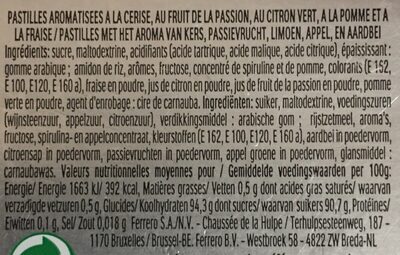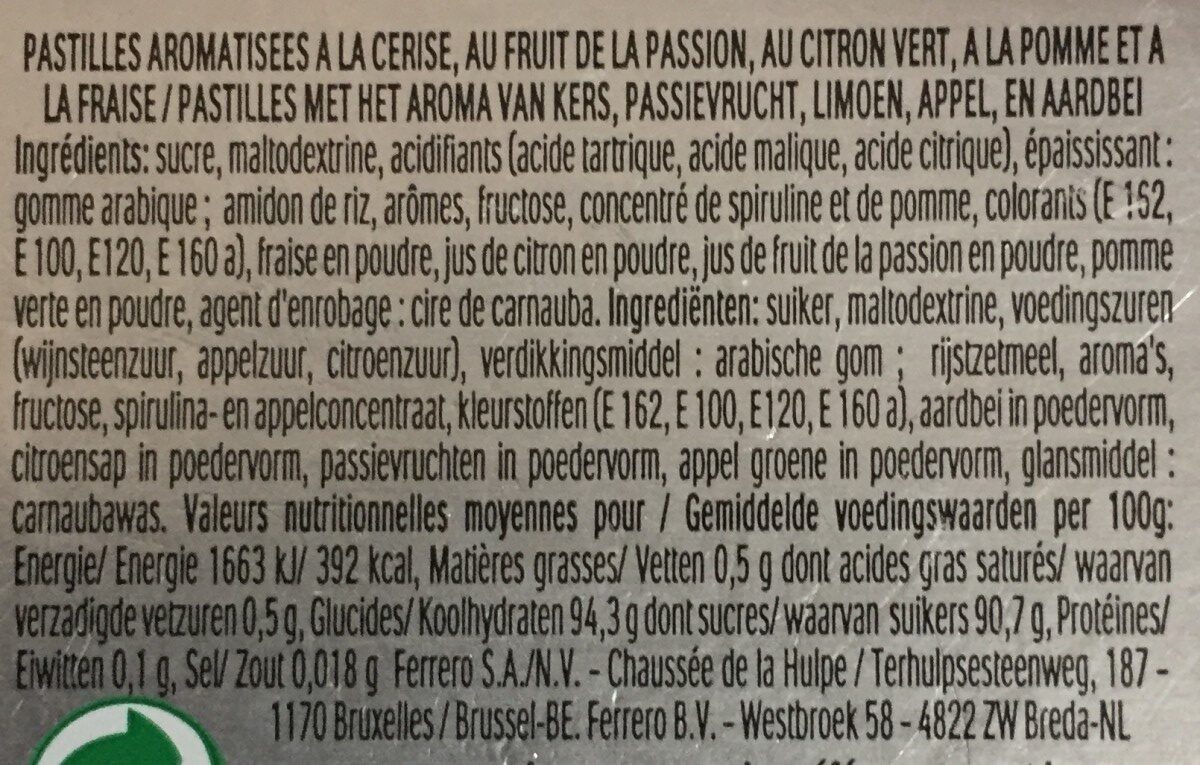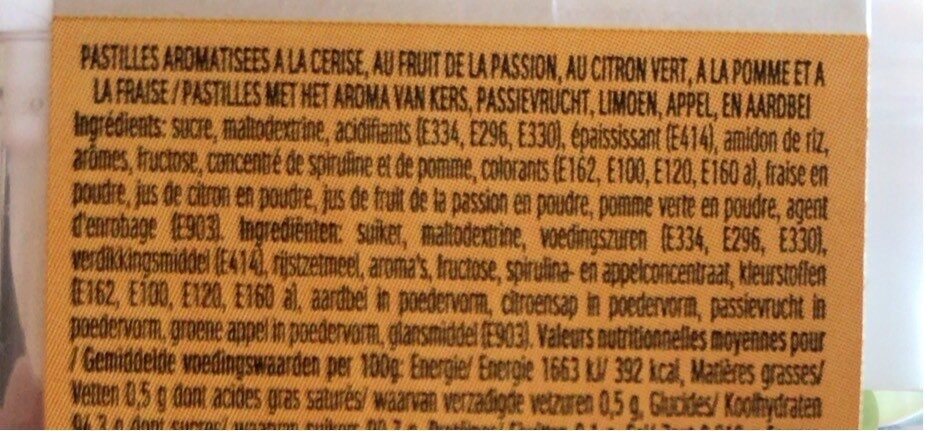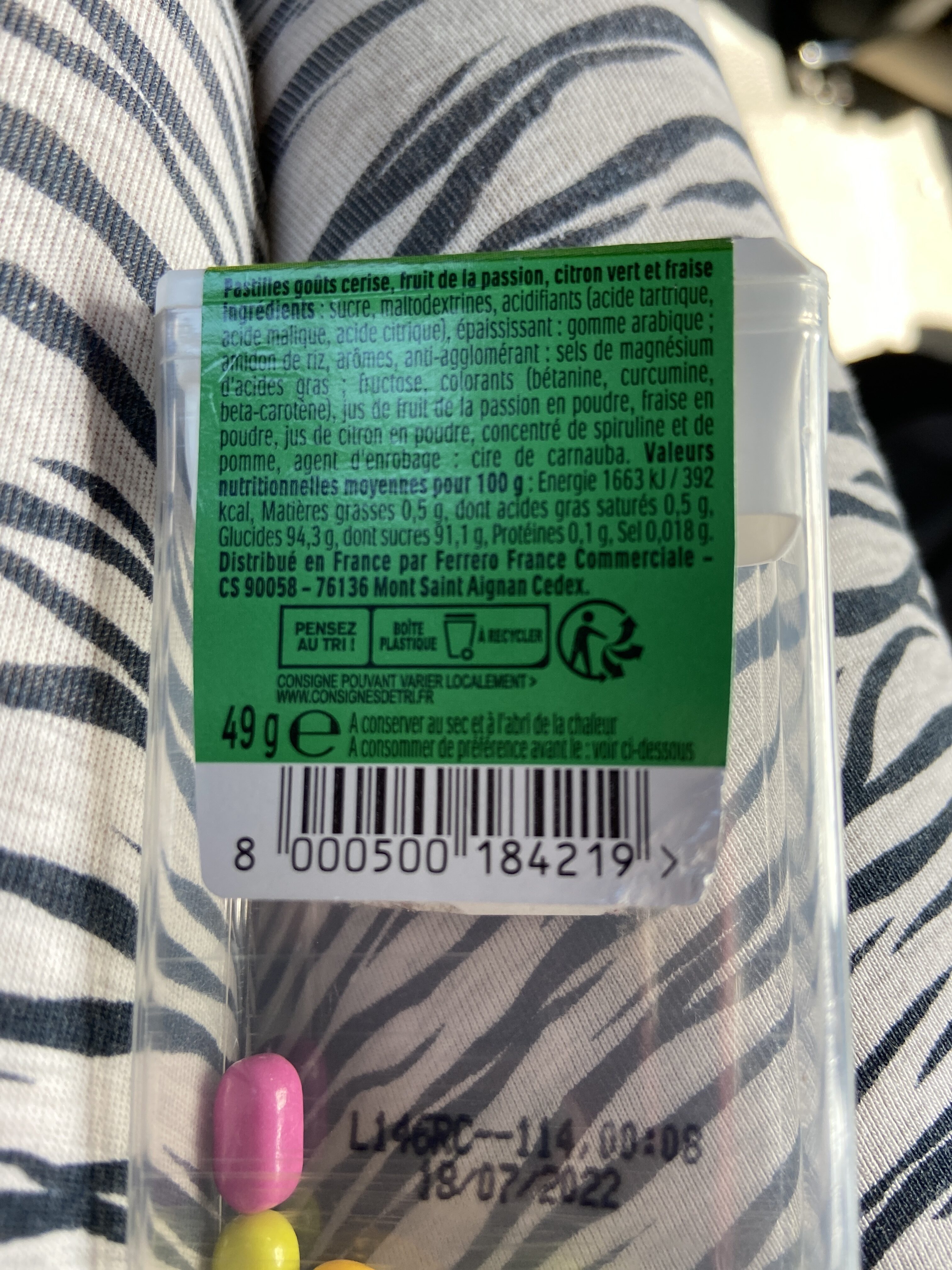Bonbons Tic Tac x100 pastilles FESTIVAL - 49g - 49 g
This product page is not complete. You can help to complete it by editing it and adding more data from the photos we have, or by taking more photos using the app for Android or iPhone/iPad. Thank you!
×
Some of the data for this product has been provided directly by the manufacturer FERRERO FRANCE COMMERCIALE.
Barcode: 8000500184219 (EAN / EAN-13)
Common name: TIC TAC FESTIVAL : Pastilles goûts cerise, fruit de la passion, citron vert et fraise
Quantity: 49 g
Packaging: Plastic, Blister, fr:Boîte en plastique
Brands: TIC TAC
Categories: Snacks, Sweet snacks, Confectioneries, Candies, fr:Pastilles aromatisées
Labels, certifications, awards:
Triman, Verified
Stores: Delhaize
Matching with your preferences
Other information
Conservation conditions: A conserver au sec et à l'abri de la chaleur
Customer service: FERRERO FRANCE COMMERCIALE - Service Consommateurs, CS 90058 - 76136 MONT SAINT AIGNAN Cedex
Report a problem
Data sources
The manufacturer FERRERO FRANCE COMMERCIALE uses Equadis to automatically transmit data and photos for its products.
Product added on by openfoodfacts-contributors
Last edit of product page on by org-ferrero-france-commerciale.
Product page also edited by autorotate-bot, benoit-05, countrybot, ecoscore-impact-estimator, g123k, inf, kiliweb, ourlaem, packbot, quechoisir, roboto-app, teolemon, yuka.E65_P4DSFJU7Odz9j9xozCGZO-vEHO0FO19Uow, yuka.EIFyZNCVJMkDLcvo8oY0_2C5O7y9JdtZSGBRow, yuka.KJtobPqQJf0xM8aN1NMNwRaZF_bcO_ZXKnQfog, yuka.U5tcI_qRINEkGvfs2okR_hO1KOvhCfsHAEYJoQ, yuka.UUlRN0w0bFF1ZDFiaWZFQ3dEVHExOWNxNllTcmNGaU5kTWs0SVE9PQ, yuka.UjY4OUZhOHpwTWNOc2ZNZTFTblk0ZE1yeDZHNVIyem9KZVFNSVE9PQ, yuka.UzRVK1A0UWEvZU5Sdi9jZ3hCRFcrUGg2bW9hWlIyaXlKOUUxSVE9PQ, yuka.VrlIDsG5PPE4M_r89qgNxCGUTtjrJOJwB0ANoQ, yuka.sY2b0xO6T85zoF3NwEKvlhV7XfjM_gnNOD_vs3eN9IqVC4HqStN1xdfGY6s, yuka.sY2b0xO6T85zoF3NwEKvlkFHX9HZryn1DjLQtxCFno-DfoHuTf997K2mHao.












